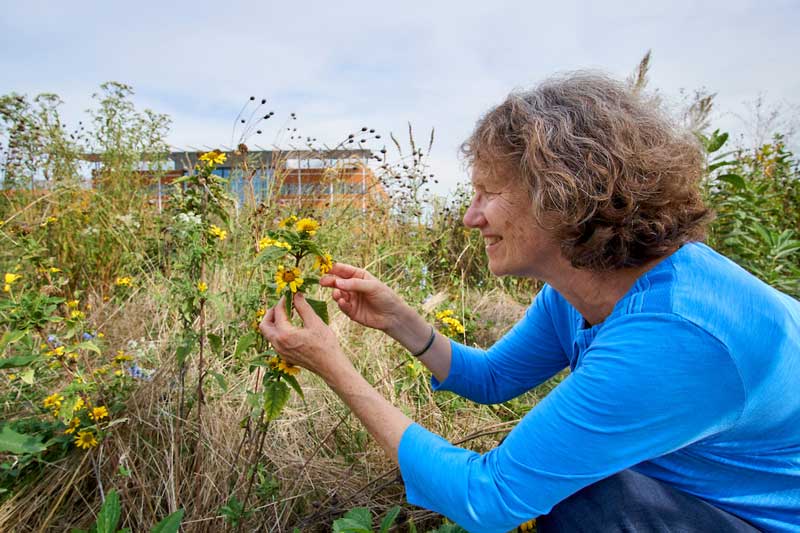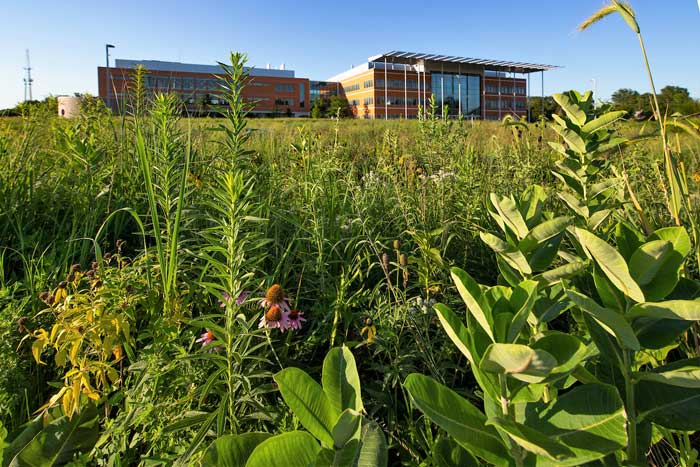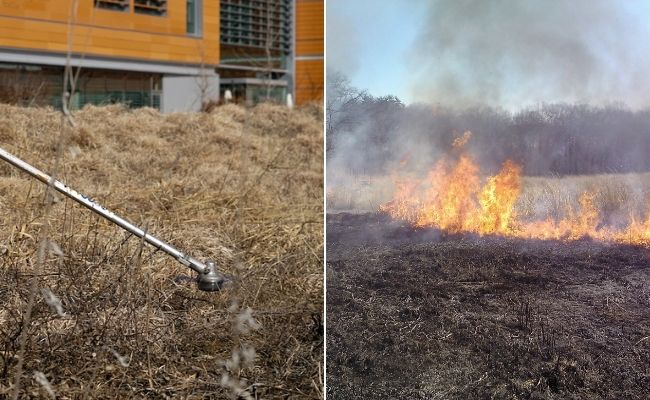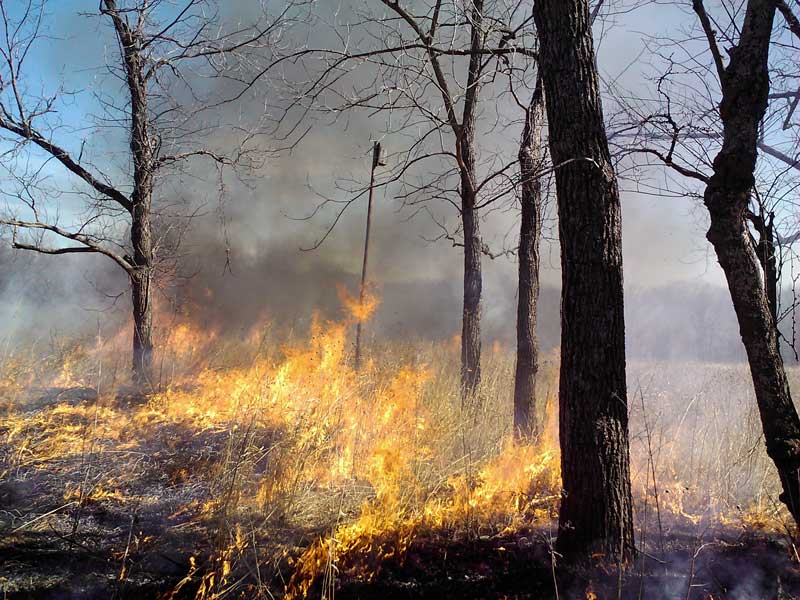Enhancing Native Plant Biodiversity in the Danforth Center Prairie
If you were to go out into the six acres of reconstructed Missouri tallgrass prairie in front of the Danforth Center and look closely, you may be able to find seedlings of unwelcome invaders looking to compete for resources.
The seedlings can be from both native trees, like cottonwood, or invasive species, such as honeysuckle. So how do prairie landscapes keep trees and invasive species out? “Some sort of natural disturbance is essential to maintaining prairie grassland,” says Elizabeth “Toby” Kellogg, PhD, Member and Robert E. King Distinguished Investigator. Before modern fragmented nature, these natural disturbances included “fire, storms, floods, migrating bison, even insect plagues and pathogens” (Shaw Nature Reserve, Ecological Restoration & Habitat Management, Missouri Botanical Garden).

Elizabeth “Toby” Kellogg, PhD, Member and Robert E. King Distinguished Investigator, in the six acres of reconstructed Missouri tallgrass prairie in front of the Donald Danforth Plant Science Center.
A natural disturbance offers many benefits for prairie land. It removes weeds and prevents excess plant biomass from building up, which enhances native plant biodiversity in the prairie. Removing excess plant biomass also helps to maintain the land for wildlife habitats. A natural disturbance like fire can also act as a fertilizer by adding nutrients back into the soil.
Mowing the Danforth Center Prairie
The Danforth Center prairie is mowed once a year in the spring to achieve the same effect as a natural disturbance. As the tall prairie grasses fall over at the end of the season, they create a dense layer of biomass. By removing this layer through mowing, the prairie grasses are prevented from dominating the prairie, and flowering plants like coreopsis and false indigo can continue to thrive. Mowing the prairie also improves the habitat for wildlife.

Reconstructed Missouri tallgrass prairie in front of the Donald Danforth Plant Science Center.
Let It Burn: Prescribed Fire at the Shaw Nature Reserve
Today, one of the most common natural disturbances is prescribed fire, applied to prairies through controlled burnings. For the prairie land at the Shaw Nature Reserve, burn season starts in October during tree leaf drop and ends in early March. “We burn when the weather conditions allow,” says Scott Woodbury, Horticulture Manager at the Shaw Nature Reserve. “Some years are better than others, as the conditions change from year to year.”

On the left is the Danforth Center prairie being mowed in Spring 2020. On the right is a prescribed fire at the Shaw Nature Reserve, photo courtesy of Scott Woodbury, Horticulture Manager, Shaw Nature Reserve.
To complete a burn, there needs to be the perfect levels of humidity, wind, and lift, explains Woodbury. If the humidity is too low, aggressive flames are more likely to develop, but if it is too high, the grasses will not burn. There needs to be some wind to feed the fire, but not too much or else the fire could become uncontrollable. “The sweet spot is 5-10 miles per hour,” says Woodbury. The last factor is lift, or the ability for smoke to rise. “We do not like to burn when the lift is low, as this means smoke will stay low and potentially have negative effects,” he says.

Prescribed fire at the Shaw Nature Reserve, photo courtesy of Scott Woodbury, Horticulture Manager, Shaw Nature Reserve.
Enhancing native biodiversity is essential to maintaining a healthy prairie, which benefits our environment in many ways. Prairies are home to some of the most important grasses on Earth. Prairie restoration efforts provide nesting sites and floral resources that can help achieve stable and diverse insect populations. The tall-grass prairie is also a perfect habitat for a variety of birds since it provides food, shelter and nesting sites. Members of the Danforth community have participated in global bird counts, such as the Great Backyard Bird Count, identifying 29 species in the prairie.